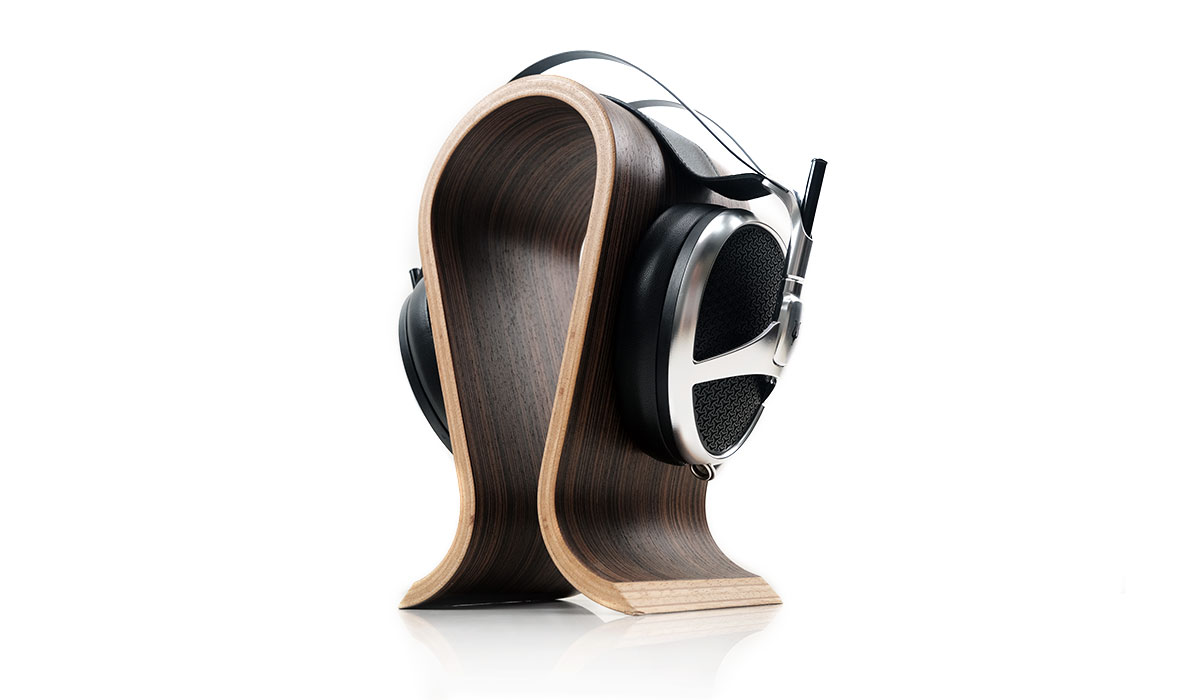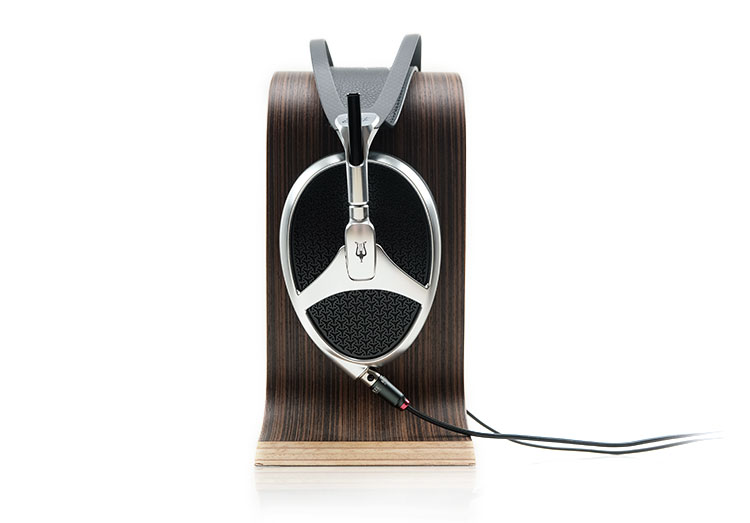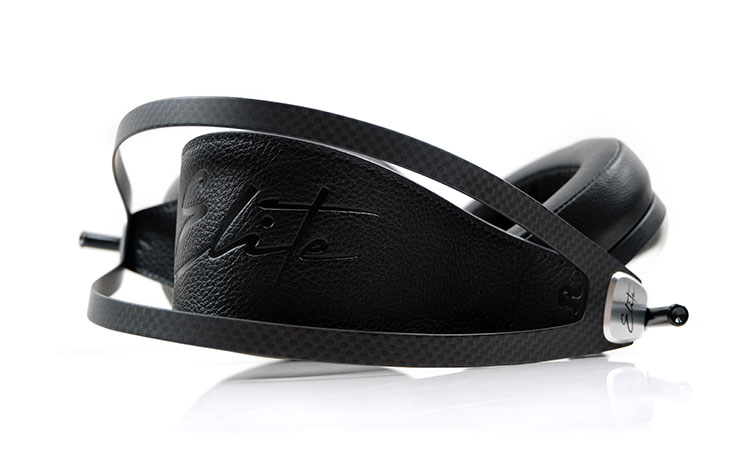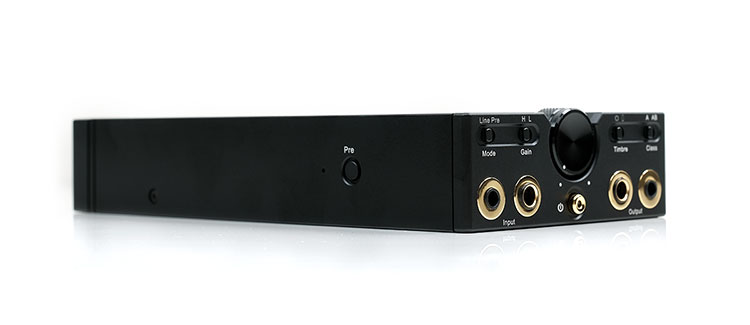Sound Impressions
Summary
Although the Elite pulls a little from the Empyrean’s nod to those who favor a smoother sound over clinical reference qualities, it is in fact a very different proposition from the original. You can read more about how exactly it differs in our comparisons section on page 3.
Putting aside the pad tuning differences, the Elite is a spacious sounding, nay big-sounding presentation with an easy-going lilt to its timbre. Despite retaining some head-gain in the upper-mids similar to the Empyrean, the Elite is never in your face, too shouty or unbalanced sounding.
In fact, you could argue it has a lighter touch than before with a bass response that is more linear, tighter, and articulate than the Empyrean. I still find the Elite bass response to be punchy though, just with a reduction on the upper bass bloom that in turn, allows mids and vocals, in particular, to sound clear and natural.
The Elite treble presence this time has been given a welcome boost in presence over the original though again, not a shape piercing tuning. Rather, it’s not as faded and sounds more coherent with a better harmonic balance, a superior extension that, in turn, provides more space for the mids to breathe.
Pad Tweaks
With the Empyrean it was all about the leather pads and once again with the Elite my preference swings to the new hybrid leather and Alcantara pads over the velour alternatives.
There are a few reasons for that. The first is the reduced depth of the pads which brings you closer to the driver. I personally find the Alcantara pad height and smaller cavity to give me a little more distance and not as much connection with the music.
The second is the reduction in the bass presence from around 80Hz downwards and a generally lighter body with the Alcantara pads. This in turn gives the Elite more of a pronounced midrange and vocal bias and a slightly cleaner timbre also with more 8-10k treble.
It is not a bright tonality but one lacking in gravitas or a strong bass fundamental and suitable primarily for softer vocal-centric or more delicate genres of music.
The Hybrid pads inject more body into the Elite’s instrumental timbre and also introduce a better bass punch with a noticeable increase in staging depth. Also, a closer positioning to the ear canal means those hybrid magnet arrays have an easier time directing the mids and high soundwaves into the ear canal so perceived clarity gets a boost.
Frequency Response
Whilst generally aiming for a Harman-type response curve the Elite is a little south in the peaks compared to the target response line. Particularly in the mids and a little north in the mid-to-upper-bass around 80Hz-300/400Hz.
That low-end response has a shelf-like elevation with the sub-bass just a little behind though by no means gutted out from 80Hz down to 20Hz. As a result, the Elite is more punch than outright rumble but with a neutral lower-mids line up to 1k which prevents any excessive bass bleed.
The lack of bloom is perhaps one of the biggest deviations from the Empyrean. Personally, I kind of like the Empyrean low-end though, it has some nice weight with a bass fundamental that was endearing for my type of preferences.
The Elite bass does extend well just you get less of the weight here with that slight dip. It is cleaner with better control compared to the Empyrean allowing you to ‘peer down’ a little easier and pick up more nuanced low-end passages of music.
Mids and highs are slightly below the normal head-gain curve of the Harman from 1k up to 10k giving the Elite that slightly relaxed vibe. It is not that the mids or vocals lack presence though, they are just not as intimate and in your face as the LCD-5 which is a few dB above the peak around 3-4k.
Treble is nicely tuned on the Elite with a more coherent sound compared to the Empyrean, also less relaxed. It is still not an overly forward tuning with a gentle drop from 5k to around 8k and always just below the Harmon ideal dB elevation. However, its upper treble headroom has improved and you do pick up some subtle shimmer in the mids timbre as a result.
Timbre
The absolute calling card of the Elite and like the Empyrean just a superbly likable and endearing quality. Unless you are a cold clean reference lover or big on V-shaped high contrast sounds, the Elite’s smooth and relaxed coloration is very hard to dislike.
This time it’s not as thick and weighty or as rich as the Empyrean timbre. It has a lighter touch in terms of instrumental note body but also a slightly airier tone with a bit more odd-harmonic infusion to give each not a bit of lift in terms of definition.
Spatial cues have more clarity as a result and whilst you will be hard-pressed to tease out any sibilance from the Elite there is a slight shimmery coloration from the superior treble tuning.
The low-end has plenty of punch also with a decent if not overly physical bass fundamental. It is not as aggressive or robust as the LCD-5 but definitely more voluptuous compared to the flatter D8000 Pro low-end.
I would suggest sticking with the hybrid pads and an energetic solid-state amplifier with good dynamic range here also if you want to maximize the Elite’s bass response. Once you switch to the Alcantara pads the timbre changes from natural and slightly weighted to a cleaner tone with less note weight.
Not a bad choice to be had if you are aiming for acoustical recordings or vocal-centric tracks but a tight dynamic and bass fundamental is quite important for me with the Elite when going for rock and EDM.
Staging
Meze really did a number on the Elite in terms of upsizing the perceived staging presence compared to the more intimate sounding Empyrean. Gone is that dense feel and instead you get an airier spacious quality to the soundstage.
You do lose a little bit of the power of the original but the extension, clarity, and punch of the low-end of the Elite have been maximized. That means better layering and a more accurate rendering of low-end musical passages. I know some will still lean to the density of the Empyrean, that’s fine, I still enjoy it a lot also, but the Elite low-end is a bit more refined for me.
What you lose in terms of rumble, you gain in mids clarity, width, and headroom. It is surprisingly open with excellent stereo imaging and despite having a relatively forward upper mids you never once feel it’s overly stretched in terms of imaging.
Again, the pads will alter the staging dynamic a little with the Alcantara pads switching your listening bias upwards more to the mids and highs and the hybrid pads lowering your attention more to the mids and bass.
Synergy
My personal system preference for pairing with the Elite was a decently powered solid-state desktop amplifier with a solid low-end combined with a smooth-sounding R2R DAC. The Elite has some scaling capability and the additional resolution offered by some excellent desktop systems sounded more optimal during this review process compared to DAPs.
It could well be anecdotal based on my current tube amplifier line up but the Auris HA-2SF combined with the Qutest DAC didn’t quite have the immediacy that something like the solid-state XI Formula S and Ferrum ORR could offer.
More affordable offerings such as the Yulong Aquila II will also give you plenty of headroom and punch with the Elite so you do not have to spend an absolute fortune to drive the Elite quite well.
Ferrum ORR
Despite the welcome thickness on the low-end, there was a degree of softness through the mids of the HA-2SF pairing that didn’t quite have the energy and quickness I was looking for. I found all that in the really excellent Ferrum OOR pairing backed with the Holo Spring DAC 2.
This is a super articulate, very neutral, and clean amplifier backed by a very natural sounding DAC. It pairs wonderfully well with the Elite to deliver excellent separation and articulation. It won’t go super heavy on the low-end, there are other weightier amps for that but the control and precision of this pairing are what you are aiming for here.
Xi Audio Formula S
In some ways, the Formula S replicates that super articulate tone of the Ferrum OOR when paired with the Elite save for a slight change in the timbral emphasis. There is a bit more treble energy and sparkle with this pairing and not quite as neutral or linear compared to the ORR.
dCs Bartok
The final pairing was perhaps my favorite, the dCS Bartok. This pairing injected a bit of weight and physicality on the low-end of the Elite but also produced a more natural midrange tonal quality with a very black background.
This is less of a high-fidelity approach and more of a weighted, detailed, and very natural sound. The dynamics when going balanced or with the Furukawa PCUHD upgrade cables are also excellent. You get a bit of that oomph that can sometimes be missing with the stock OFC cable.
Efficiency
The rating for the Elite has not really changed from the Empyrean despite housing a new diaphragm at 32Ω and 101dB SPL. It is one of the few flagships out there that will actually do rather well with portable sources. Especially in 2021 with a lot of new portable devices capable of much more power than a few years ago.
That being said, the Elite does scale with better amplification and I do have a particular penchant for keeping the Elite low-end as tight and impactful as possible. Some DAPs can deliver a very detailed performance with the Elite such as the Lotoo PAW Gold Touch but the bass can lack a bit of solidity for me compared to more powerful amps.
Cayin’s R01 R2R motherboard does better for low-end reach, one of its calling cards. However, my personal preference is their 2.6W into 32Ω capable C9 portable tube amp, particularly with the Class AB in tube mode which has a healthy mix of low-end girth and a natural vocals timbre.
You will get a better sense of dynamics and headroom with this pairing if you can grab a 4.4mm adapter for the XLR-terminated Elite cable and use a balanced line-in.
If the budget doesn’t stretch as far for both a DAP and portable amplifier then I recommend the R8 from Hiby. The power is good here with their turbo mode 4.4m output capability. Importantly, the bass response offers some improved body over the more neutral alternatives without overpowering the midrange presence.
A good line-in is important for me with this pairing also so if it is a DAP then something like the Cayin E02 or the Luxury & Precision P6 Pro 4.4mm line-out will give you excellent gain control and better bass definition from the Elite.
Click on page 3 below for select comparisons






